207 results found for 'Energy'. Prev |1|2|3|4|5|6|7|8|9 | Next | View 100 per page
Low relevance matches: 10 other results may be of interest to you. Show low relevance matches
Electrical Circuits - Electrical energy can be transferred and transformed in electrical circuits and can be generated from a range of sources ACSSU155 Year 8 Physical Sciences
Energy Forms - Energy appears in different forms, including movement (kinetic energy), heat and potential energy, and energy transformations and transfers cause change within systems ACSSU176 Year 9 Biological Sciences
Ecology - Ecosystems consist of communities of interdependent organisms and abiotic components of the environment; matter and energy flow through these systems ACSSU179 Year 9 Chemical Sciences
Chemical Reactions - Chemical reactions, including combustion and the reactions of acids, are important in both non-living and living systems and involve energy transfer ACSSU182 Year 9 Physical Sciences
Energy Transfer - Energy transfer through different mediums can be explained using wave and particle models ACSSU190 Year 10 Physical Sciences
Energy Conservation - Energy conservation in a system can be explained by describing energy transfers and transformations ACSSU219 Year 6 Physical Sciences
Alternative Energies - Energy from a variety of sources can be used to generate electricity ACSCH018 Year 11 Chemical fundamentals
Properties and structure of atoms - Atoms can be modelled as a nucleus surrounded by electrons in distinct energy levels, held together by electrostatic forces of attraction between the nucleus and electrons; atoms can be represented using electron shell diagrams (all electron shells or val ACSCH019 Year 11 Chemical fundamentals
Properties and structure of atoms - Flame tests and atomic absorption spectroscopy are analytical techniques that can be used to identify elements; these methods rely on electron transfer between atomic energy levels ACSCH036 Year 11 Chemical fundamentals
Chemical reactions - All chemical reactions involve the creation of new substances and associated energy transformations, commonly observable as changes in the temperature of the surroundings and/or the emission of light ACSCH037 Year 11 Chemical fundamentals
Chemical reactions - Endothermic and exothermic reactions can be explained in terms of the Law of Conservation of Energy and the breaking and reforming of bonds; heat energy released or absorbed can be represented in thermochemical equations ACSCH073 Year 11 Molecular interactions and reactions
Rates of chemical reactions - Catalysts, including enzymes and metal nanoparticles, affect the rate of certain reactions by providing an alternative reaction pathway with a reduced activation energy, hence increasing the proportion of collisions that lead to a chemical change ACSPH020 Year 11 Thermal nuclear and electrical physics
Heating processes - Provided a substance does not change state, its temperature change is proportional to the amount of energy added to or removed from the substance; the constant of proportionality describes the heat capacity of the substance ACSPH022 Year 11 Thermal nuclear and electrical physics
Heating processes - Two systems in contact transfer energy between particles so that eventually the systems reach the same temperature; that is, they are in thermal equilibrium ACSPH030 Year 11 Thermal nuclear and electrical physics
Ionising radiation and nuclear reactions - Alpha, beta and gamma radiation have sufficient energy to ionise atoms ACSPH039 Year 11 Thermal nuclear and electrical physics
Electrical circuits - Energy is conserved in the energy transfers and transformations that occur in an electrical circuit ACSPH040 Year 11 Thermal nuclear and electrical physics
Electrical circuits - The energy available to charges moving in an electrical circuit is measured using electric potential difference, which is defined as the change in potential energy per unit charge between two defined points in the circuit ACSPH041 Year 11 Thermal nuclear and electrical physics
Electrical circuits - Energy is required to separate positive and negative charge carriers; charge separation produces an electrical potential difference that can be used to drive current in circuits ACSPH042 Year 11 Thermal nuclear and electrical physics
Electrical circuits - Power is the rate at which energy is transformed by a circuit component; power enables quantitative analysis of energy transformations in the circuit ACSPH065 Year 11 Linear Motion and Waves
Linear motion and force - Energy is conserved in isolated systems and is transferred from one object to another when a force is applied over a distance; this causes work to be done and changes to kinetic and/or potential energy of objects ACSPH066 Year 11 Linear Motion and Waves
Linear motion and force - Collisions may be elastic and inelastic; kinetic energy is conserved in elastic collisions ACSPH073 Year 11 Linear Motion and Waves
Waves - A mechanical system resonates when it is driven at one of its natural frequencies of oscillation; energy is transferred efficiently into systems under these conditions ACSPH111 Year 12 Gravity and electromagnetism
Electromagnetism - Conservation of energy, expressed as Lenz’s Law of electromagnetic induction, is used to determine the direction of induced current ACSPH136 Year 12 Revolutions in modern physics
Quantum theory - On the atomic level, electromagnetic radiation is emitted or absorbed in discrete packets called photons; the energy of a photon is proportional to its frequency; and the constant of proportionality, Planck’s constant, can be determined experimentally (fo ACSPH139 Year 12 Revolutions in modern physics
Quantum theory - The Bohr model of the hydrogen atom integrates light quanta and atomic energy states to explain the specific wavelengths in the hydrogen spectrum and in the spectra of other simple atoms; the Bohr model enables line spectra to be correlated with atomic en ACSBL052 Year 11 Biodiversity and the interconnectedness of life
Ecosystem dynamics - Photosynthesis is a biochemical process that in plant cells occurs in the chloroplast and that uses light energy to organic compounds; the overall process can be represented as a balanced chemical equation ACSBL053 Year 11 Biodiversity and the interconnectedness of life
Ecosystem dynamics - Cellular respiration is a biochemical process that occurs in different locations in the cytosol and mitochondria and metabolises organic compounds, aerobically or anaerobically, to release useable energy in the form of ATP; the overall process can be repr ACSPH021 Year 11 Thermal nuclear and electrical physics
Heating processes - Change of state involves internal energy changes to form or break bonds between atoms or molecules; latent heat is the energy required to be added to or removed from a system to change the state of the system ACSPH067 Year 11 Linear Motion and Waves
Waves - Waves are periodic oscillations that transfer energy from one point to another ACSPH070 Year 11 Linear Motion and Waves
Waves - Mechanical waves transfer energy through a medium; mechanical waves may oscillate the medium or oscillate the pressure within the medium ACSPH140 Year 12 Revolutions in modern physics
Quantum theory - On the atomic level, energy and matter exhibit the characteristics of both waves and particles ACSPH135 Year 12 Revolutions in modern physics
Quantum theory - Atomic phenomena and the interaction of light with matter indicate that states of matter and energy are quantised into discrete values ACSPH105 Year 12 Gravity and electromagnetism
Electromagnetism - When a charged body moves or is moved from one point to another in an electric field and its potential energy changes, work is done on or by the field
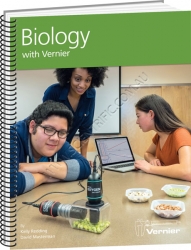
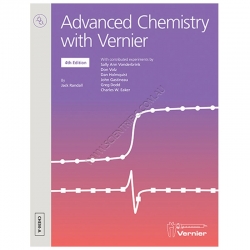

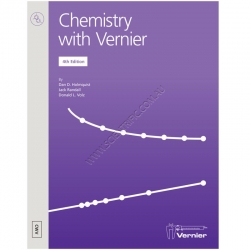


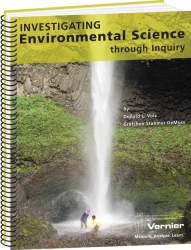

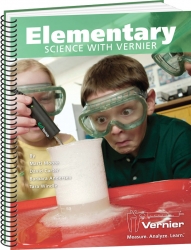



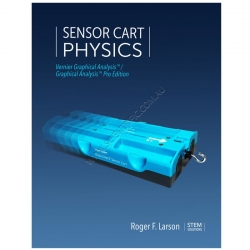
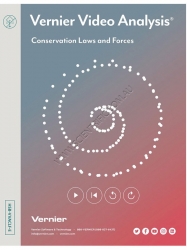
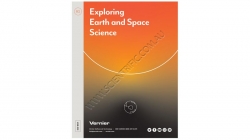
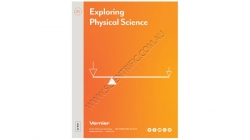
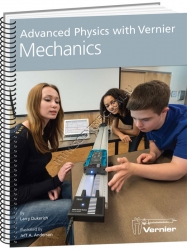

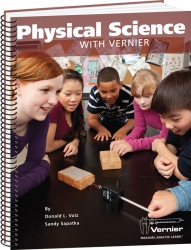

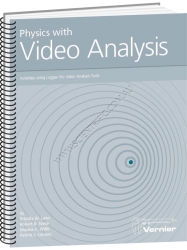

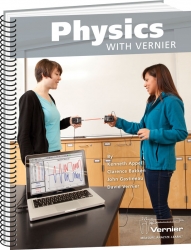

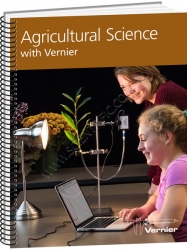
207 results found for 'Energy'. Prev |1|2|3|4|5|6|7|8|9 | Next | View 100 per page
Low relevance matches: 10 other results may be of interest to you. Show low relevance matches
Curriculum resources related to 'Energy'
ACSSU097 Year 6 Physical SciencesElectrical Circuits - Electrical energy can be transferred and transformed in electrical circuits and can be generated from a range of sources ACSSU155 Year 8 Physical Sciences
Energy Forms - Energy appears in different forms, including movement (kinetic energy), heat and potential energy, and energy transformations and transfers cause change within systems ACSSU176 Year 9 Biological Sciences
Ecology - Ecosystems consist of communities of interdependent organisms and abiotic components of the environment; matter and energy flow through these systems ACSSU179 Year 9 Chemical Sciences
Chemical Reactions - Chemical reactions, including combustion and the reactions of acids, are important in both non-living and living systems and involve energy transfer ACSSU182 Year 9 Physical Sciences
Energy Transfer - Energy transfer through different mediums can be explained using wave and particle models ACSSU190 Year 10 Physical Sciences
Energy Conservation - Energy conservation in a system can be explained by describing energy transfers and transformations ACSSU219 Year 6 Physical Sciences
Alternative Energies - Energy from a variety of sources can be used to generate electricity ACSCH018 Year 11 Chemical fundamentals
Properties and structure of atoms - Atoms can be modelled as a nucleus surrounded by electrons in distinct energy levels, held together by electrostatic forces of attraction between the nucleus and electrons; atoms can be represented using electron shell diagrams (all electron shells or val ACSCH019 Year 11 Chemical fundamentals
Properties and structure of atoms - Flame tests and atomic absorption spectroscopy are analytical techniques that can be used to identify elements; these methods rely on electron transfer between atomic energy levels ACSCH036 Year 11 Chemical fundamentals
Chemical reactions - All chemical reactions involve the creation of new substances and associated energy transformations, commonly observable as changes in the temperature of the surroundings and/or the emission of light ACSCH037 Year 11 Chemical fundamentals
Chemical reactions - Endothermic and exothermic reactions can be explained in terms of the Law of Conservation of Energy and the breaking and reforming of bonds; heat energy released or absorbed can be represented in thermochemical equations ACSCH073 Year 11 Molecular interactions and reactions
Rates of chemical reactions - Catalysts, including enzymes and metal nanoparticles, affect the rate of certain reactions by providing an alternative reaction pathway with a reduced activation energy, hence increasing the proportion of collisions that lead to a chemical change ACSPH020 Year 11 Thermal nuclear and electrical physics
Heating processes - Provided a substance does not change state, its temperature change is proportional to the amount of energy added to or removed from the substance; the constant of proportionality describes the heat capacity of the substance ACSPH022 Year 11 Thermal nuclear and electrical physics
Heating processes - Two systems in contact transfer energy between particles so that eventually the systems reach the same temperature; that is, they are in thermal equilibrium ACSPH030 Year 11 Thermal nuclear and electrical physics
Ionising radiation and nuclear reactions - Alpha, beta and gamma radiation have sufficient energy to ionise atoms ACSPH039 Year 11 Thermal nuclear and electrical physics
Electrical circuits - Energy is conserved in the energy transfers and transformations that occur in an electrical circuit ACSPH040 Year 11 Thermal nuclear and electrical physics
Electrical circuits - The energy available to charges moving in an electrical circuit is measured using electric potential difference, which is defined as the change in potential energy per unit charge between two defined points in the circuit ACSPH041 Year 11 Thermal nuclear and electrical physics
Electrical circuits - Energy is required to separate positive and negative charge carriers; charge separation produces an electrical potential difference that can be used to drive current in circuits ACSPH042 Year 11 Thermal nuclear and electrical physics
Electrical circuits - Power is the rate at which energy is transformed by a circuit component; power enables quantitative analysis of energy transformations in the circuit ACSPH065 Year 11 Linear Motion and Waves
Linear motion and force - Energy is conserved in isolated systems and is transferred from one object to another when a force is applied over a distance; this causes work to be done and changes to kinetic and/or potential energy of objects ACSPH066 Year 11 Linear Motion and Waves
Linear motion and force - Collisions may be elastic and inelastic; kinetic energy is conserved in elastic collisions ACSPH073 Year 11 Linear Motion and Waves
Waves - A mechanical system resonates when it is driven at one of its natural frequencies of oscillation; energy is transferred efficiently into systems under these conditions ACSPH111 Year 12 Gravity and electromagnetism
Electromagnetism - Conservation of energy, expressed as Lenz’s Law of electromagnetic induction, is used to determine the direction of induced current ACSPH136 Year 12 Revolutions in modern physics
Quantum theory - On the atomic level, electromagnetic radiation is emitted or absorbed in discrete packets called photons; the energy of a photon is proportional to its frequency; and the constant of proportionality, Planck’s constant, can be determined experimentally (fo ACSPH139 Year 12 Revolutions in modern physics
Quantum theory - The Bohr model of the hydrogen atom integrates light quanta and atomic energy states to explain the specific wavelengths in the hydrogen spectrum and in the spectra of other simple atoms; the Bohr model enables line spectra to be correlated with atomic en ACSBL052 Year 11 Biodiversity and the interconnectedness of life
Ecosystem dynamics - Photosynthesis is a biochemical process that in plant cells occurs in the chloroplast and that uses light energy to organic compounds; the overall process can be represented as a balanced chemical equation ACSBL053 Year 11 Biodiversity and the interconnectedness of life
Ecosystem dynamics - Cellular respiration is a biochemical process that occurs in different locations in the cytosol and mitochondria and metabolises organic compounds, aerobically or anaerobically, to release useable energy in the form of ATP; the overall process can be repr ACSPH021 Year 11 Thermal nuclear and electrical physics
Heating processes - Change of state involves internal energy changes to form or break bonds between atoms or molecules; latent heat is the energy required to be added to or removed from a system to change the state of the system ACSPH067 Year 11 Linear Motion and Waves
Waves - Waves are periodic oscillations that transfer energy from one point to another ACSPH070 Year 11 Linear Motion and Waves
Waves - Mechanical waves transfer energy through a medium; mechanical waves may oscillate the medium or oscillate the pressure within the medium ACSPH140 Year 12 Revolutions in modern physics
Quantum theory - On the atomic level, energy and matter exhibit the characteristics of both waves and particles ACSPH135 Year 12 Revolutions in modern physics
Quantum theory - Atomic phenomena and the interaction of light with matter indicate that states of matter and energy are quantised into discrete values ACSPH105 Year 12 Gravity and electromagnetism
Electromagnetism - When a charged body moves or is moved from one point to another in an electric field and its potential energy changes, work is done on or by the field
Products related to 'Energy'

Biology with Vernier - Electronic Version
BIOLOGY WITH VERNIER - ELECTRONIC
Biology with Vernier is a lab book containing 31 experiments in cell respiration, photosynthesis, membrane diffusion, osmosis, human physiology, transpiration, fermentation and other important biology concepts.
Experiments are included f...
Order code: BWV-E

Advanced Chemistry with Vernier
ADVANCED CHEMISTRY WITH VERNIER
Advanced Chemistry with Vernier is a lab book containing 35 advanced chemistry experiments designed for use with Vernier data-collection technology. There are four student alternative versions included for each experiment: Logger Pro, LabQu...
Order code: CHEM-A

Advanced Chemistry with Vernier - Electronic Version
ADVANCED CHEMISTRY WITH VERNIER - ELECTRONIC
Advanced Chemistry with Vernier is a lab book containing 35 advanced chemistry experiments designed for use with Vernier data-collection technology. There are four student alternative versions included for each experiment: Logg...
Order code: CHEM-A-E

Chemistry with Vernier
CHEMISTRY WITH VERNIER
Chemistry with Vernier is a lab book containing more than 35 experiments in thermochemistry, gas laws, acid-base reactions, equilibrium, electrochemistry, electrolytes, states of matter and more.
Experiments are included for the Gas Pressure Sen...
Order code: CWV

Chemistry with Vernier - Electronic Version
CHEMISTRY WITH VERNIER - ELECTRONIC
Chemistry with Vernier is a lab book containing more than 35 experiments in thermochemistry, gas laws, acid-base reactions, equilibrium, electrochemistry, electrolytes, states of matter and more.
Experiments are included for the Gas...
Order code: CWV-E

Vernier Investigating Motion (Elementary ebook)
VERNIER INVESTIGATING MOTION EBOOK
Investigate various properties of motion including the motion of a bouncing ball and a toy car with your Year 3-6 students using this electronic book of experiments and a GDX-MD Vernie...
Order code: ELB-MD-E

Vernier Environmental Science through Inquiry
VERNIER INVESTIGATING ENVIRONMENTAL SCIENCE THROUGH INQUIRY
Investigating Environmental Science through Inquiry is a lab book containing 34 inquiry-based investigations that prompt students’ interest in the environment. Each experiment includes a preliminary activity, tea...
Order code: ESI



Vernier Environmental Science through Inquiry - Electronic Version
VERNIER INVESTIGATING ENVIRONMENTAL SCIENCE THROUGH INQUIRY - ELECTRONIC
Investigating Environmental Science through Inquiry is a lab book containing 34 inquiry-based investigations that prompt students’ interest in the environment. Each experiment includes a preliminary ...
Order code: ESI-E

Elementary Science with Vernier
ELEMENTARY SCIENCE WITH VERNIER
Elementary Science with Vernier is a lab book containing 43 fun and engaging experiments for students in grades 2-6. Activities investigate the topics of temperature, motion, force, magnetism, light, electricity and pressure. Also included ...
Order code: EWV

Elementary Science with Vernier - Electronic Version
ELEMENTARY SCIENCE WITH VERNIER - ELECTRONIC
Elementary Science with Vernier contains 43 fun and engaging experiments for students in grades 2-6. Activities investigate the topics of temperature, motion, force, magnetism, light, electricity and pressure. Also included are...
Order code: EWV-E

Vernier Food Chemistry Experiments
Vernier Food Chemistry Experiments
Vernier Food Chemistry Experiments has 14 experiments that use food as a means to explore crucial chemistry concepts. Students are more likely to engage with science when they see concepts applied to the real world. These experiments use...
Order code: HSB-FOOD

Vernier Food Chemistry Experiments E-Book
VERNIER FOOD CHEMISTRY EXPERIMENTS E-BOOK
Vernier Food Chemistry Experiments e-book has 14 experiments that use food as a means to explore crucial chemistry concepts. Students are more likely to engage with science when they see concepts applied to the real world. These e...
Order code: HSB-FOOD-E

Vernier Sensor Cart Physics
VERNIER SENSOR CART PHYSICS
The Vernier Sensor Cart Physics lab manual features 23 guided inquiry investigations. It provides a stimulating structure to explore introductory through to senior high school concepts in kinematics, Newton’s laws of motion, forces and conserva...
Order code: HSB-SCP-E

Vernier Video Analysis: Conservation Laws and Forces E-Book
VERNIER VIDEO ANALYSIS: CONSERVATION LAWS AND FORCES E-BOOK
Vernier Video Analysis: Conservation Laws and Forces e-book features 12 investigations using the Vernier Video Analysis® app to explore mechanics topics beyond basic motion, such as conservation of energy and con...
Order code: HSB-VVACLF-E

Vernier Exploring Earth and Space Science - E Version
VERNIER EXPLORING EARTH AND SPACE SCIENCE EBOOK
Explore the Earth science topics of weather, soil and water quality with your Years 4-8 Middle School students. Collect, share and analyze sensor data with Vernier's free Graphical Analysis 4 software. The GA4 app facilitate...
Order code: MSB-ESS-E

Vernier Exploring Physical Science - E Version
VERNIER PHYSICAL SCIENCE EBOOK
Explore various physical science topics in basic chemistry and physics from matter and energy to motion and forces with your Years 4-8 Middle School students. Collect, share and analyze sensor data with Vernier's free Graphical Analysis 4 so...
Order code: MSB-PS-E

Advanced Physics with Vernier - Mechanics
ADVANCED PHYSICS WITH VERNIER - MECHANICS
This book is the first of a two-volume set of experiments for a more in-depth introductory physics course in tertiary physics, AP Physics or IB Physics. Experiments are designed for an interactive teaching style with planned momen...
Order code: PHYS-AM

Advanced Physics with Vernier Mechanics - Electronic Version
ADVANCED PHYSICS WITH VERNIER - MECHANICS - ELECTRONIC
This book is the first of a two-volume set of experiments for a more in-depth introductory physics course in tertiary physics, AP Physics or IB Physics. Experiments are designed for an interactive teaching style with ...
Order code: PHYS-AM-E

Physical Science with Vernier
PHYSICAL SCIENCE WITH VERNIER
Physical Science with Vernier is a lab book containing 40 ready-to-use experiments for physical science in grades 6-10 that are perfect for introductory physical science and integrated science classes. Experiments are included for 12 Vernier ...
Order code: PSV

Physical Science with Vernier - Electronic Version
PHYSICAL SCIENCE WITH VERNIER
Physical Science with Vernier is a lab book containing 40 ready-to-use experiments for physical science in grades 6-10 that are perfect for introductory physical science and integrated science classes. Experiments are included for 12 Vernier ...
Order code: PSV-E

Vernier Physics with Video Analysis
Discontinued - only 1 in stock
VERNIER PHYSICS WITH VIDEO ANALYSIS
The Physics with Video Analysis book contains a wide selection of video analysis activities for introductory physics at either the high school or tertiary level. Topics include kinematics, dynamics, circuits, sound, electrostatics and m...
Order code: PVA

Vernier Physics with Video Analysis - Electronic Version
VERNIER PHYSICS WITH VIDEO ANALYSIS - ELECTRONIC
The Physics with Video Analysis book contains a wide selection of video analysis activities for introductory physics at either the high school or tertiary level. Topics include kinematics, dynamics, circuits, sound, electro...
Order code: PVA-E

Physics with Vernier
PHYSICS WITH VERNIER
Physics with Vernier is a lab book containing 35 experiments in mechanics, sound, light, electricity and magnetism. This book has a wide variety of experiments for Motion Detectors, Force Sensors, Light Sensors, Magnetic Field Sensors, Microphones, Cu...
Order code: PWV

Physics with Vernier - Electronic Version
PHYSICS WITH VERNIER - ELECTRONIC
Physics with Vernier is a lab book containing 35 experiments in mechanics, sound, light, electricity and magnetism. This book has a wide variety of experiments for Motion Detectors, Force Sensors, Light Sensors, Magnetic Field Sensors, Mi...
Order code: PWV-E

Agricultural Science with Vernier - Electronic Version
AGRICULTURAL SCIENCE WITH VERNIER - ELECTRONIC
Agricultural Science with Vernier is a digital lab book containing a collection of 29 experiments that can be useful in teaching agricultural science at the high school or college level. Some experiments are designed to be do...
Order code: AWV-E
207 results found for 'Energy'. Prev |1|2|3|4|5|6|7|8|9 | Next | View 100 per page


